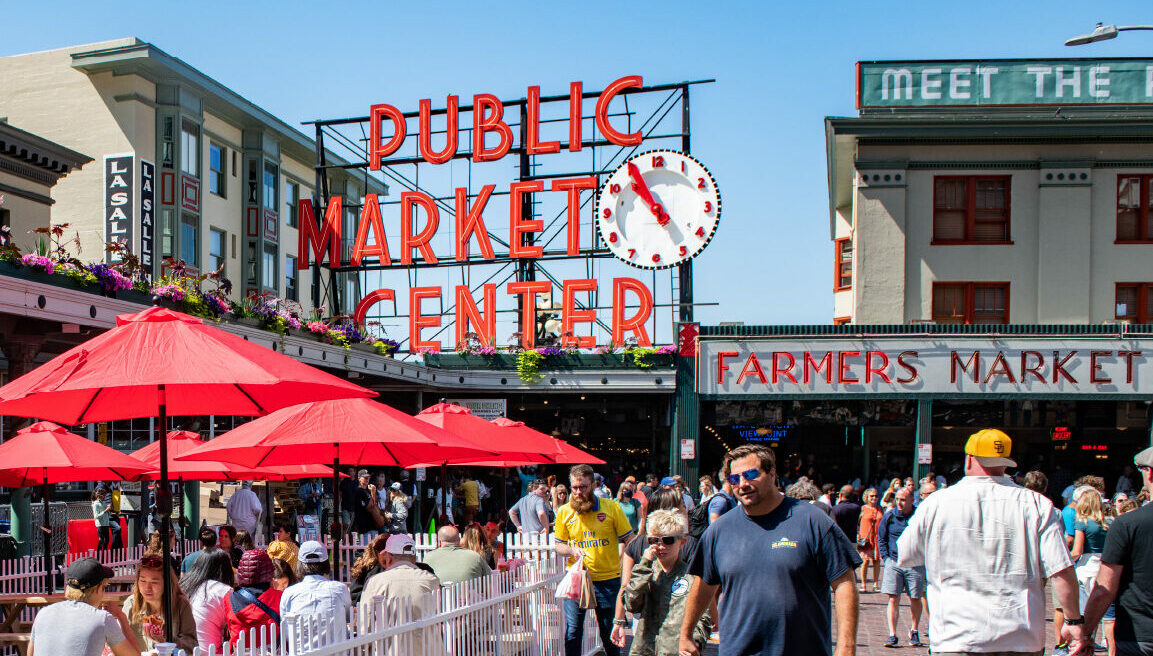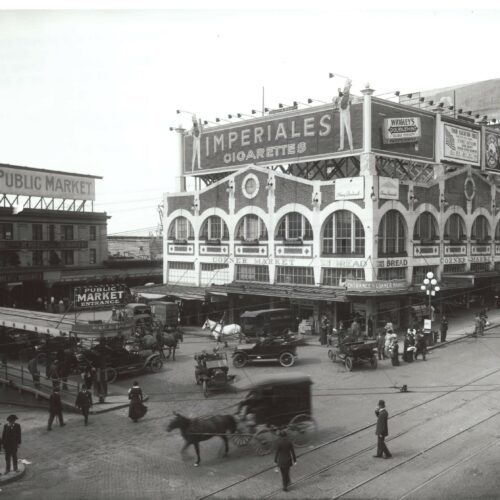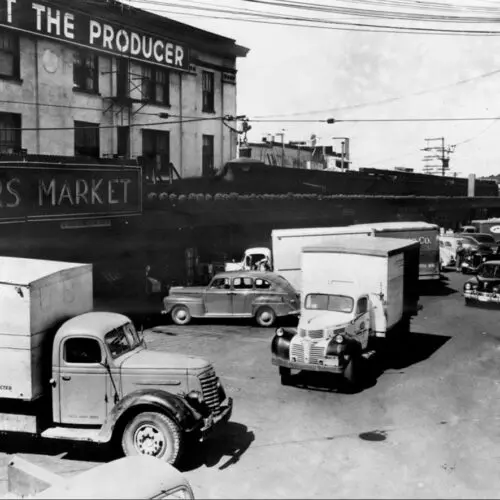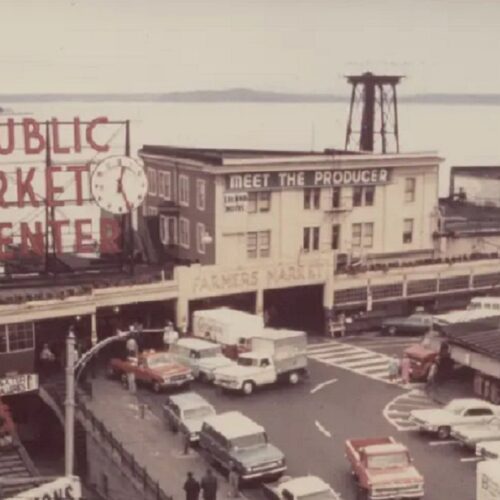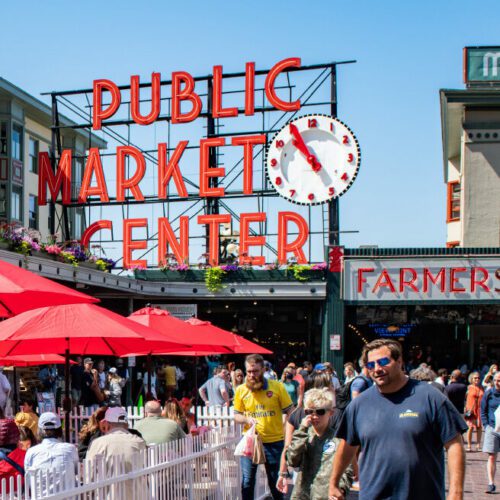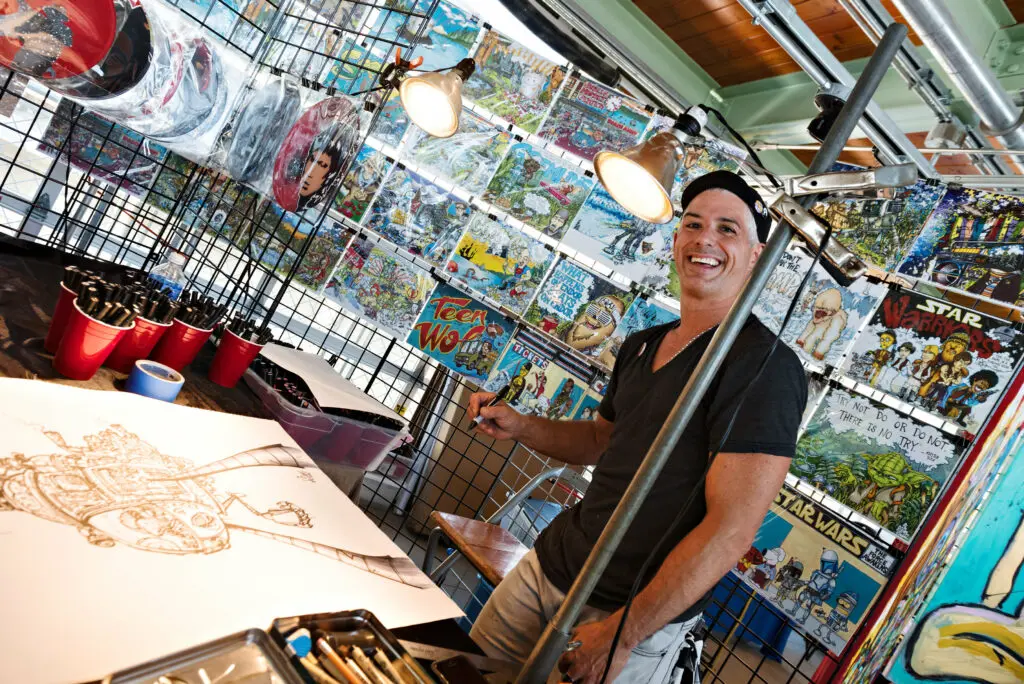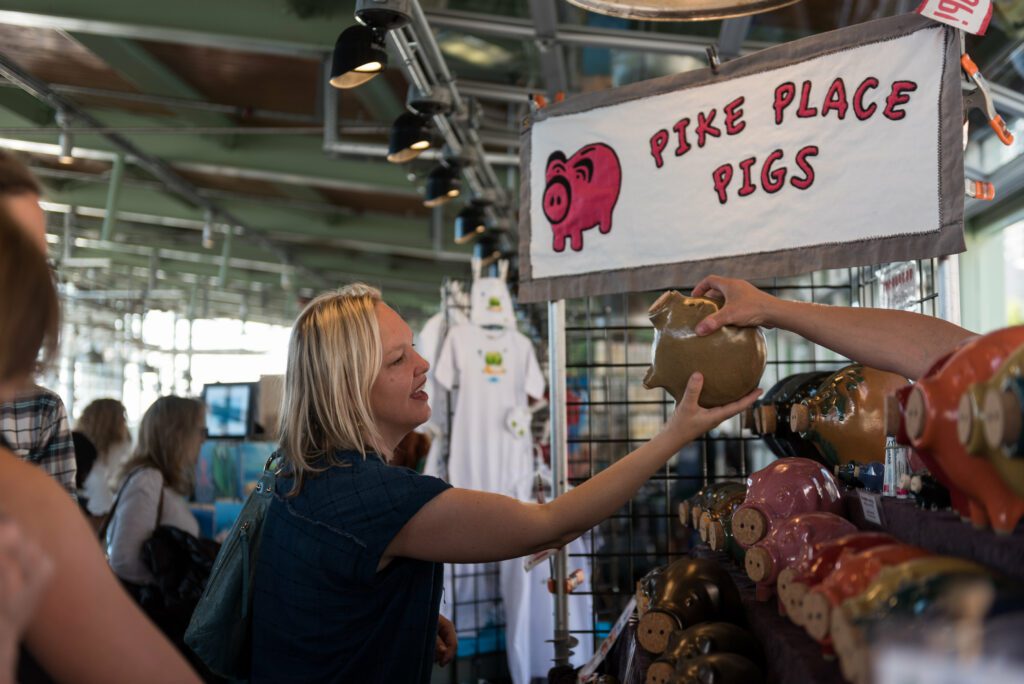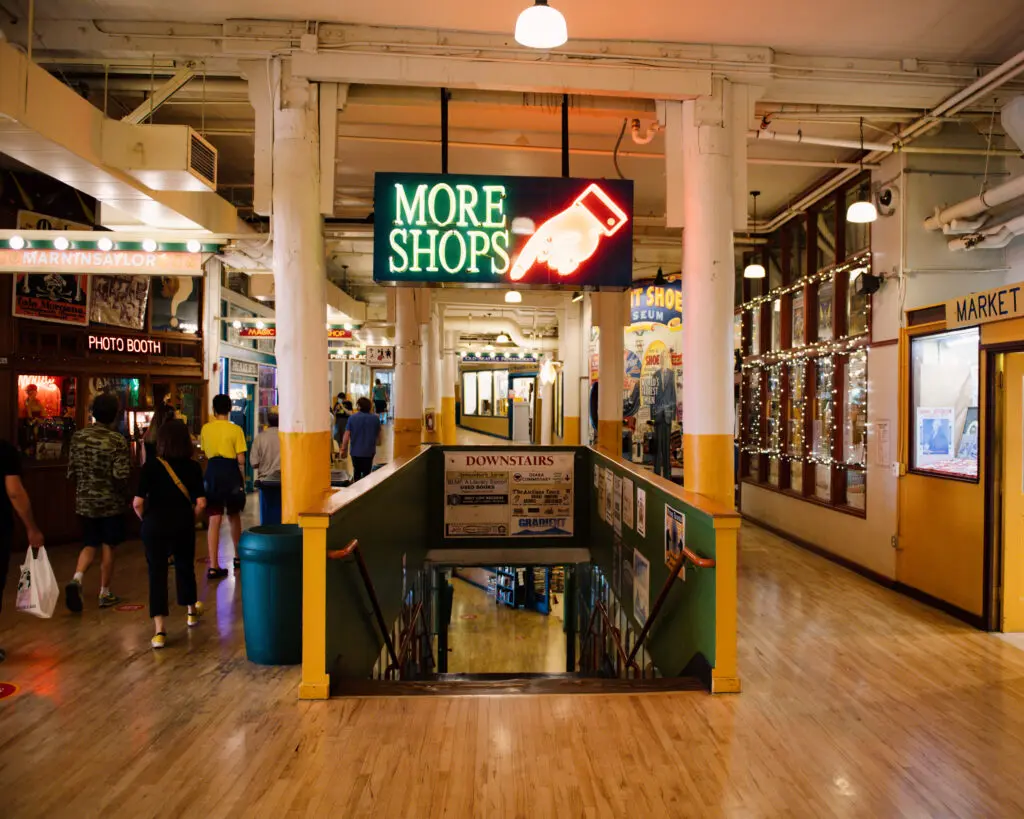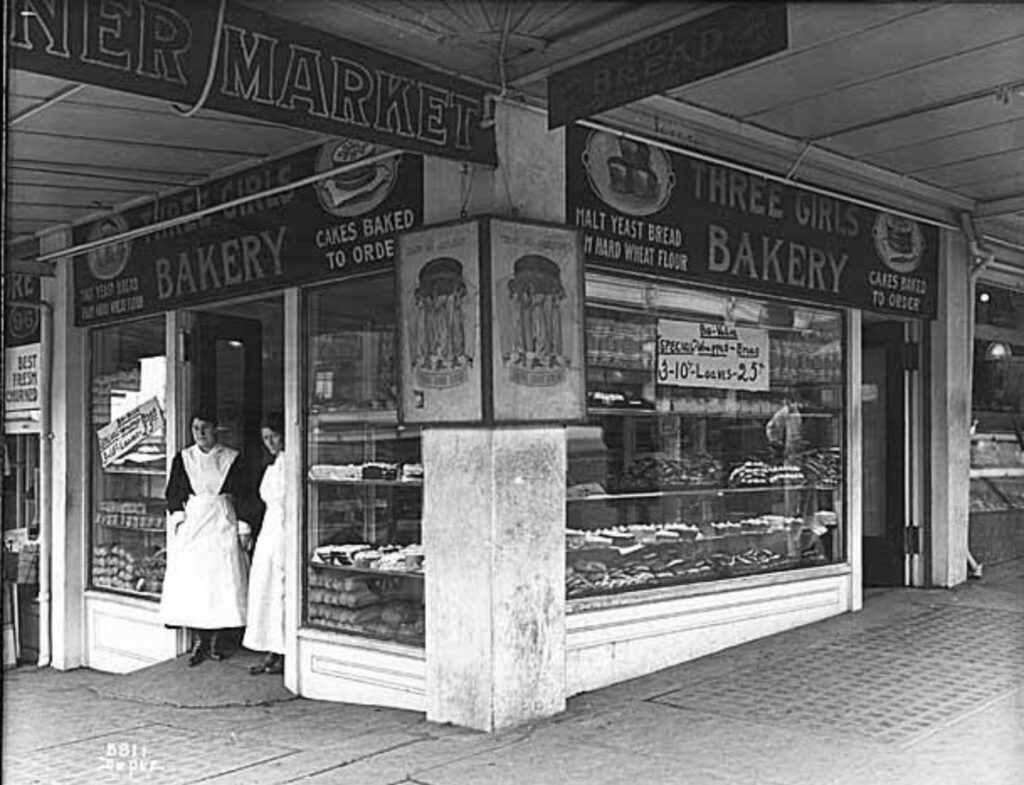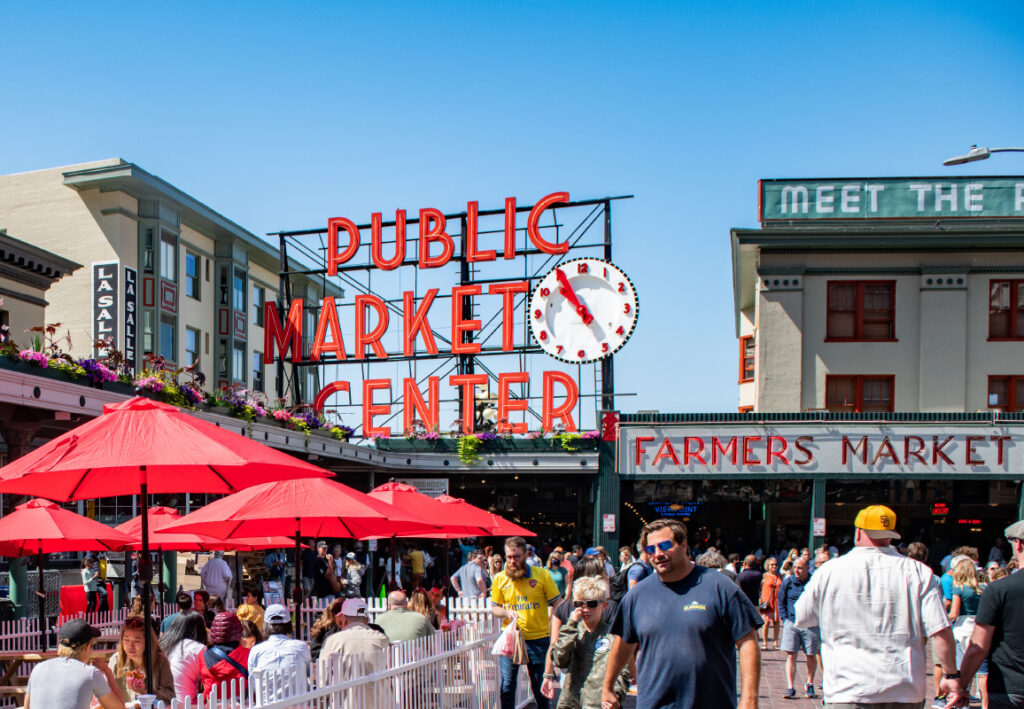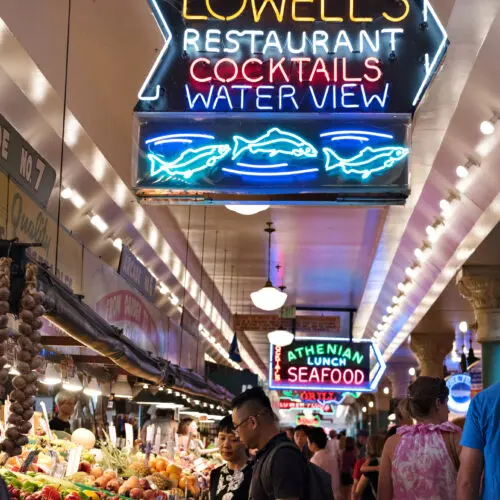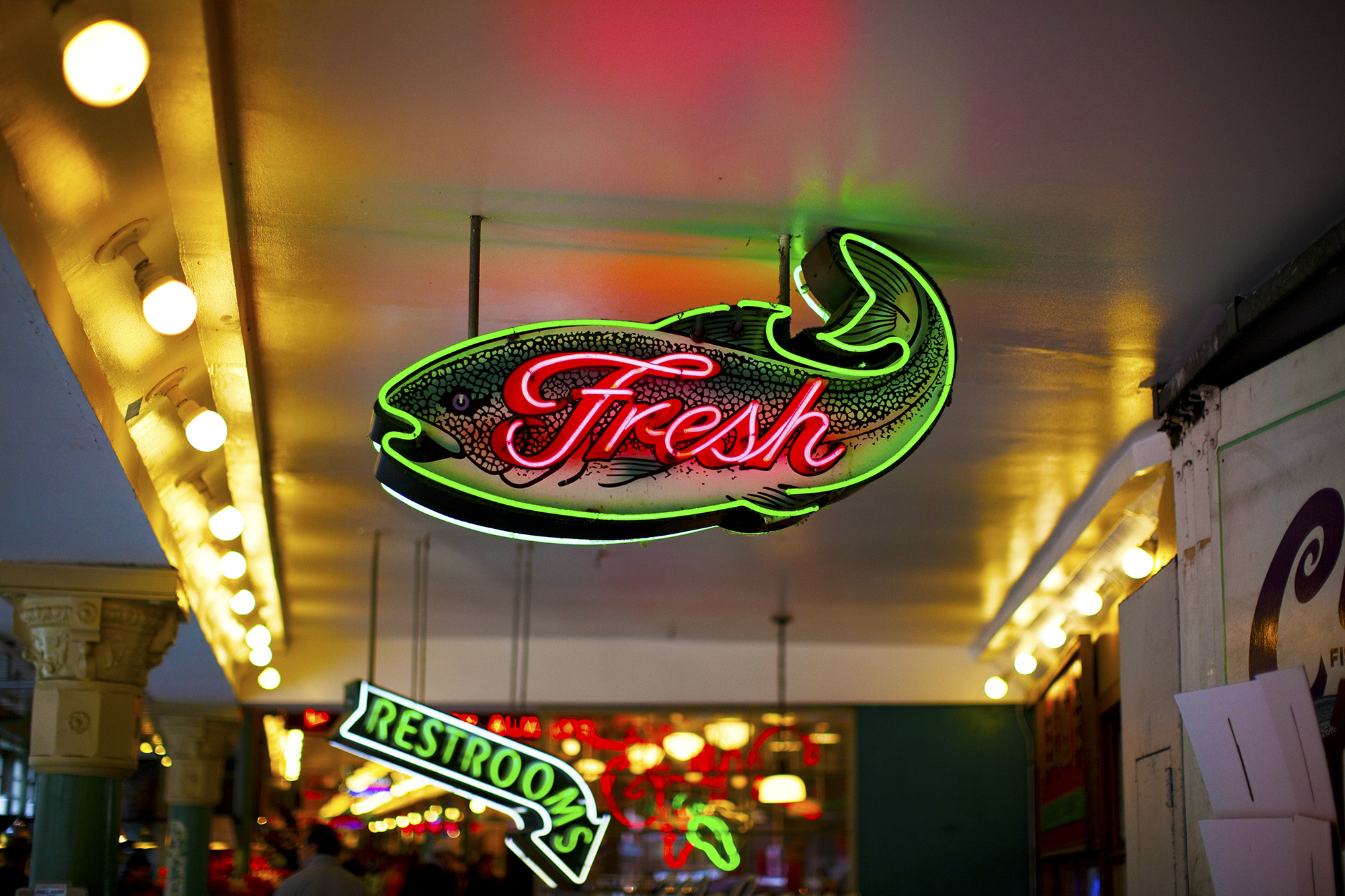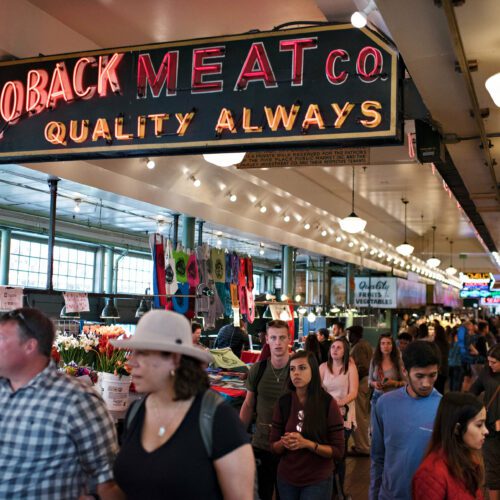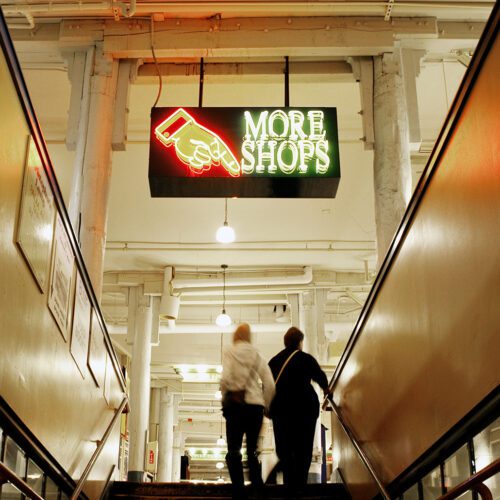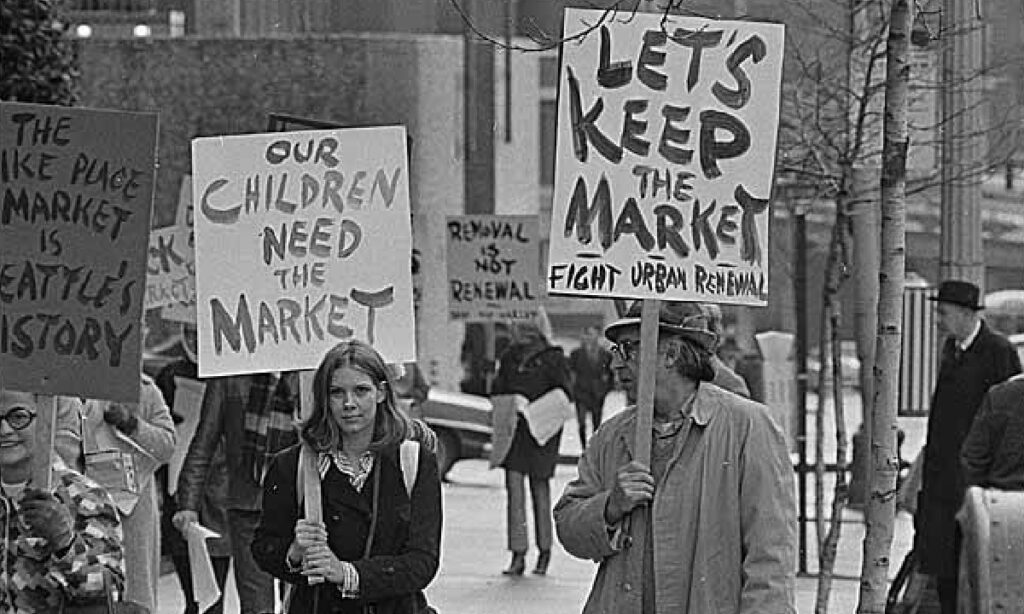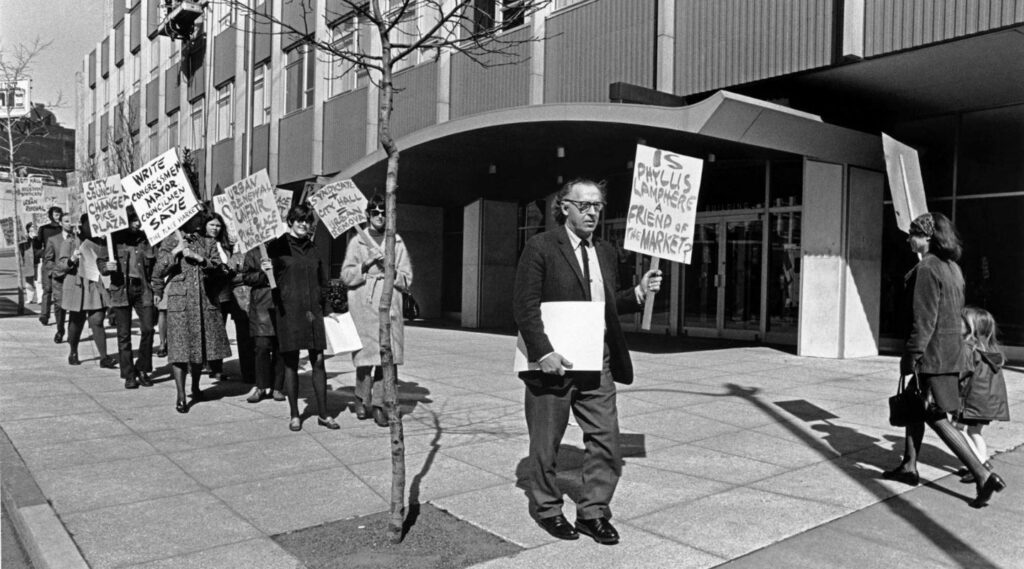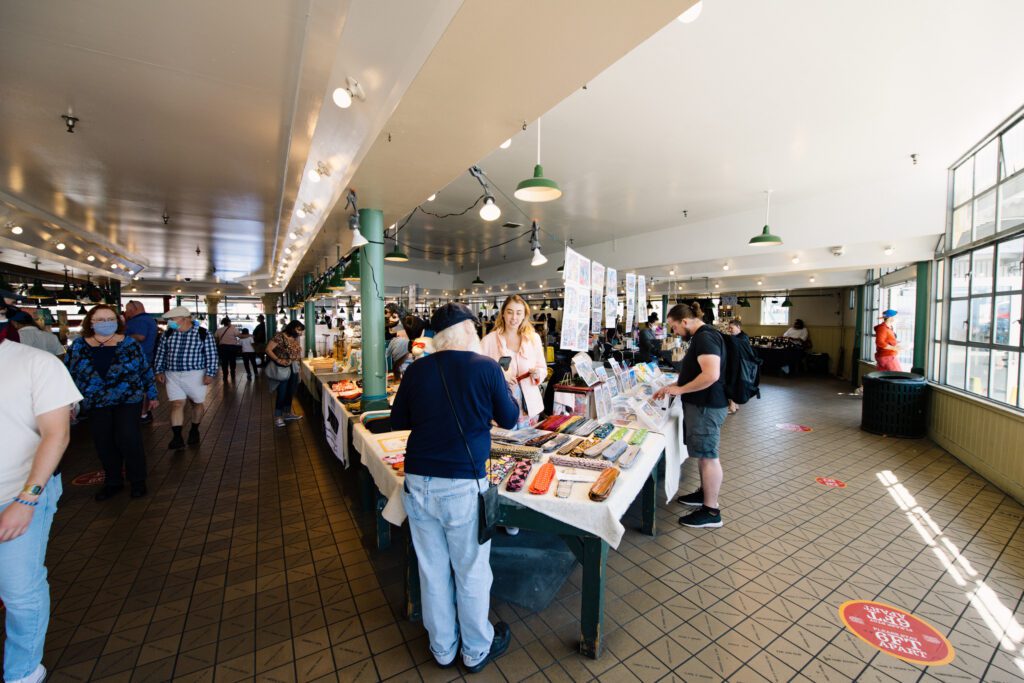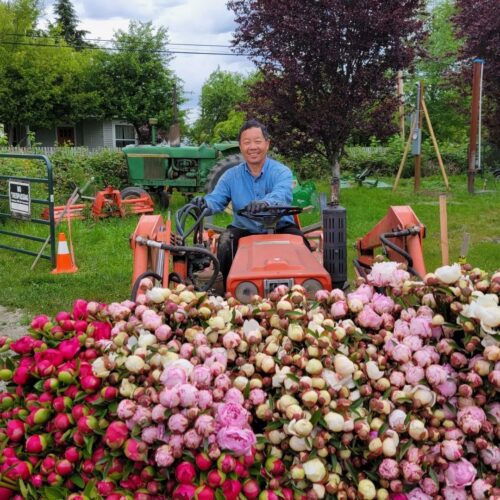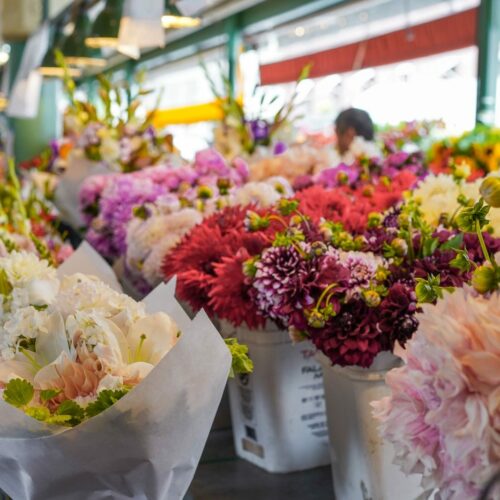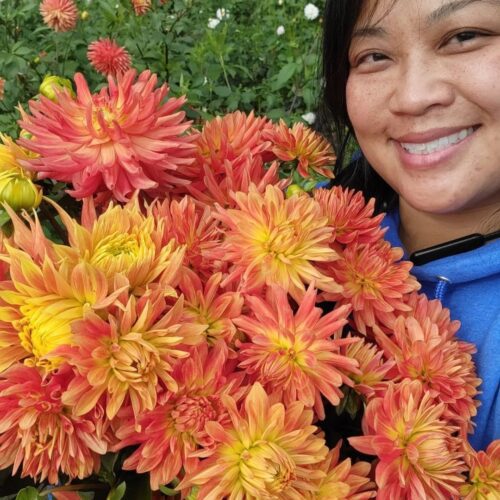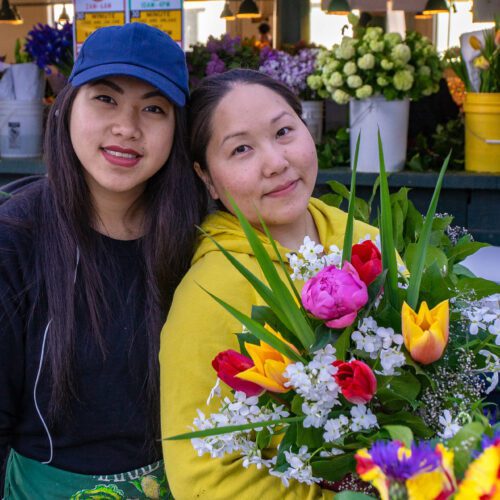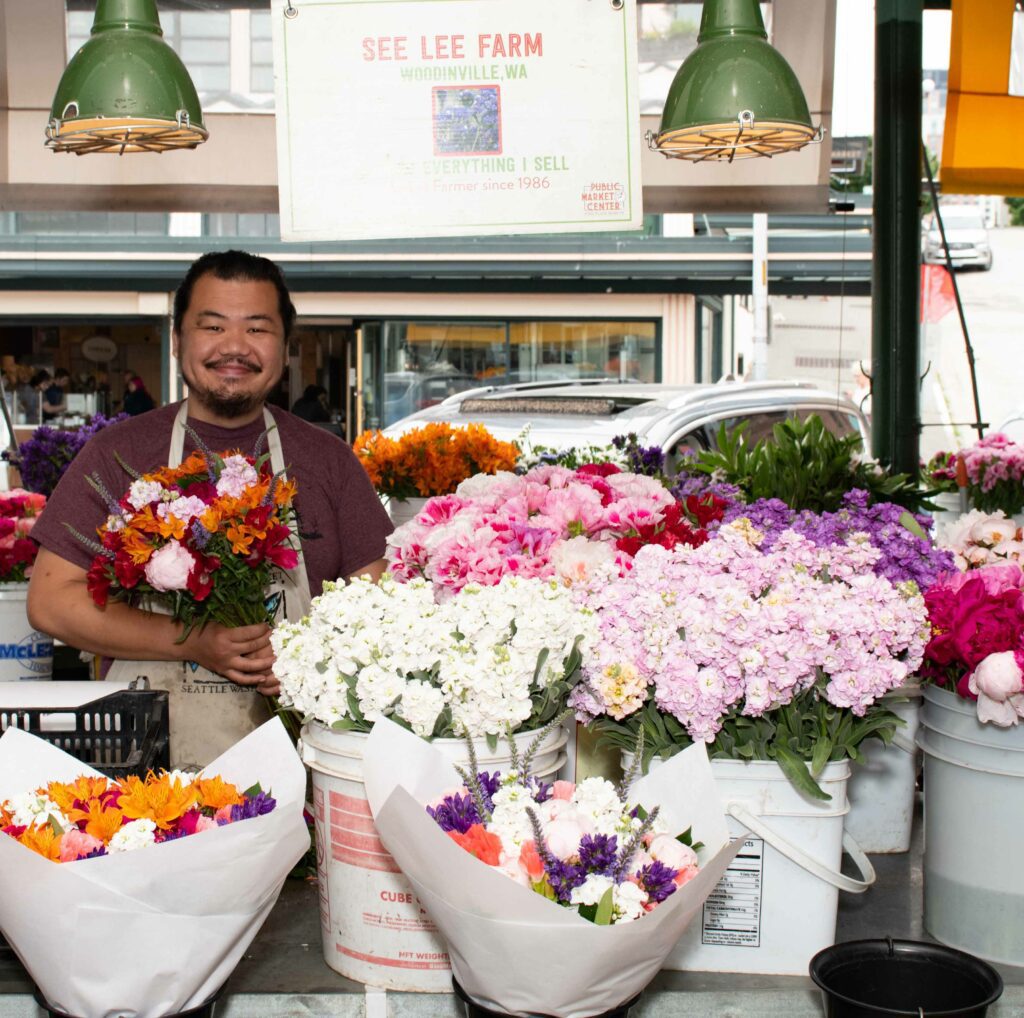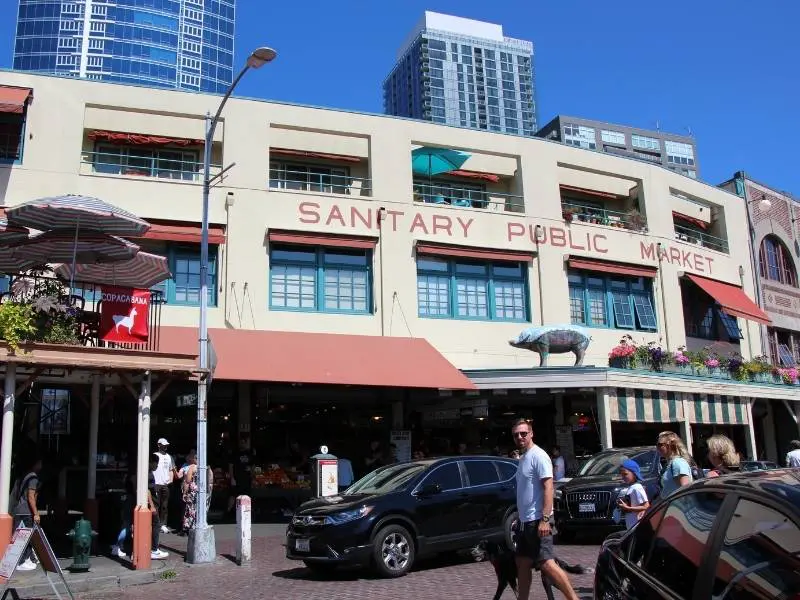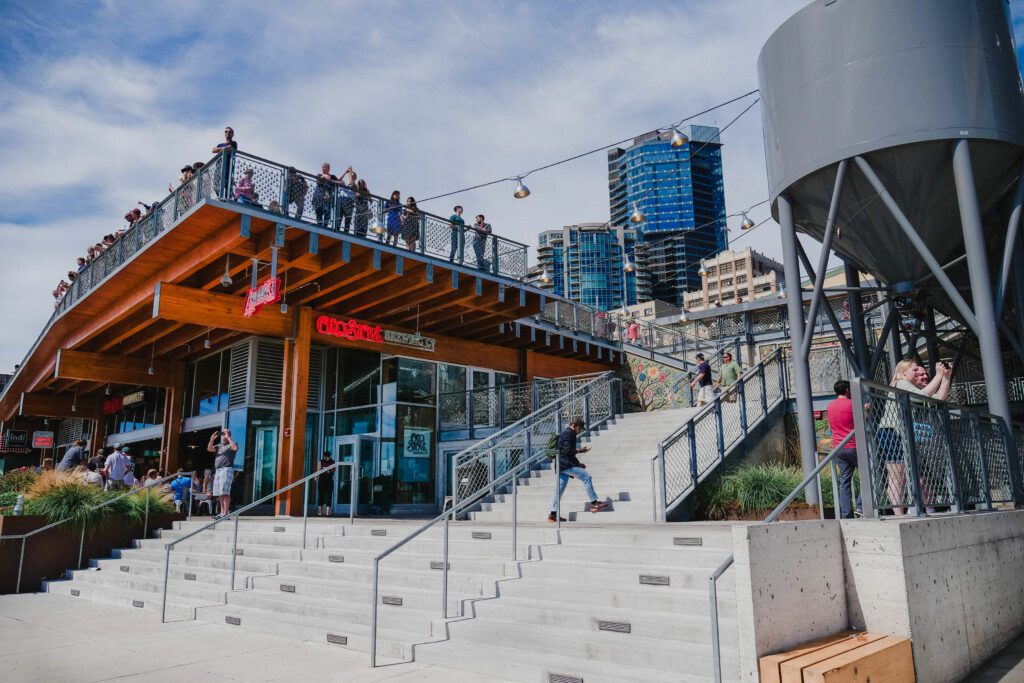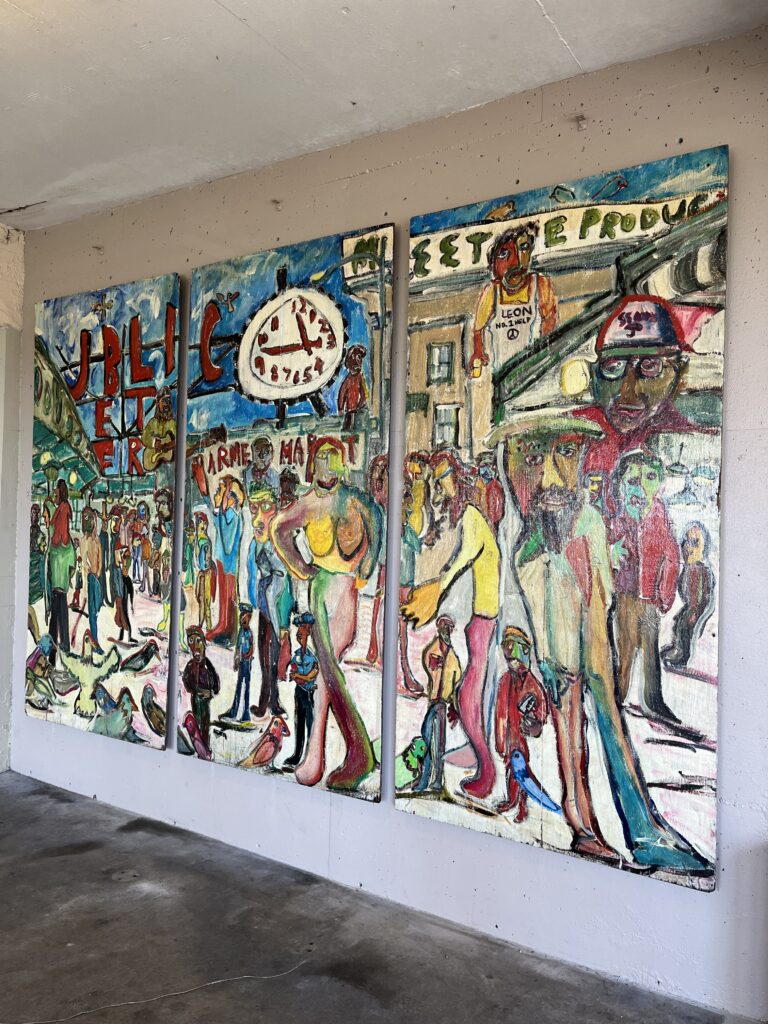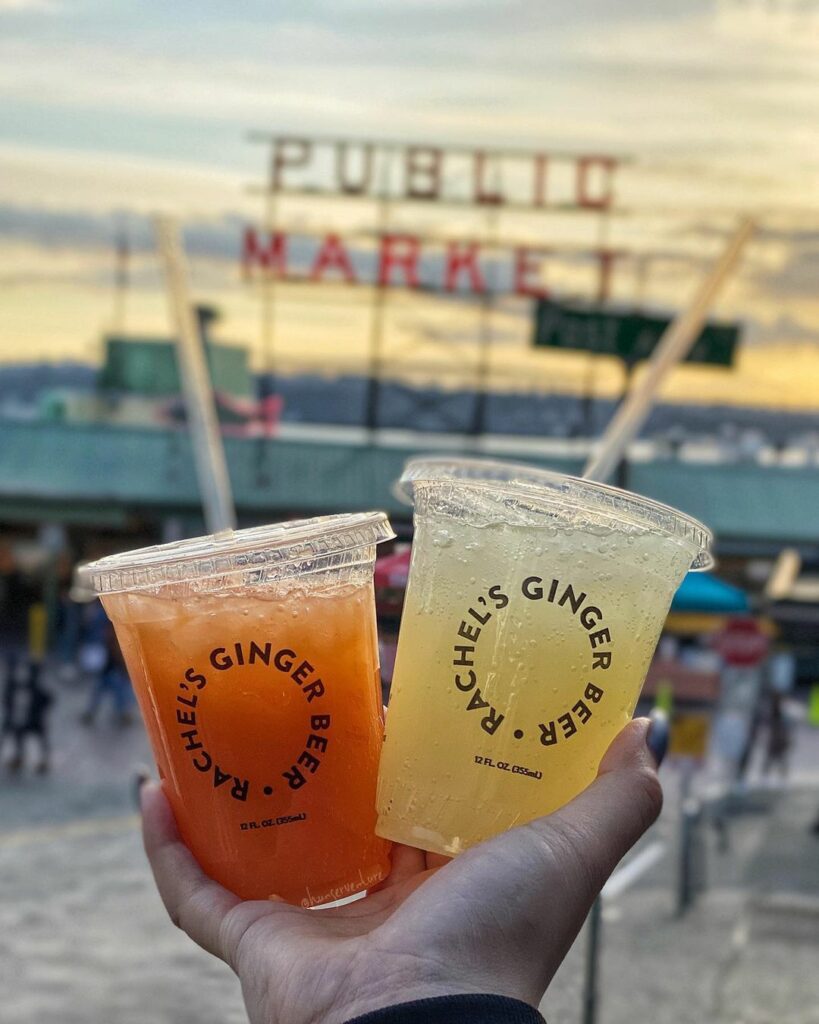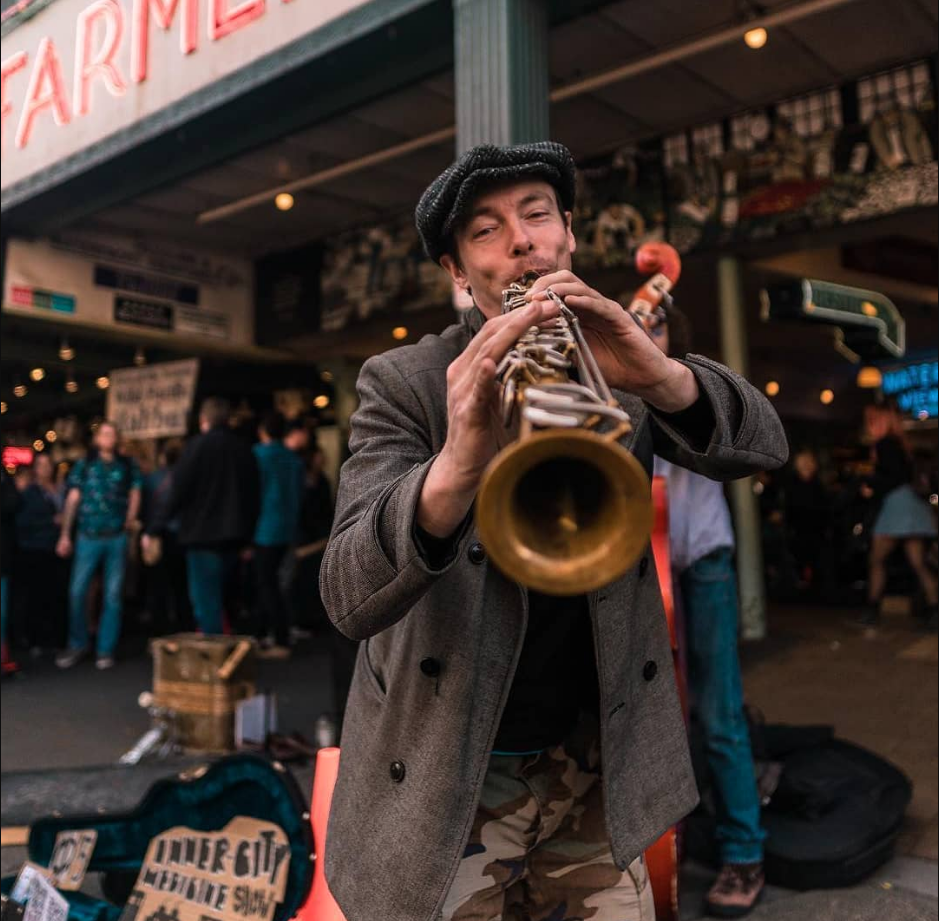We're turning 116!
As Pike Place Market celebrates 116 years of being a cultural destination in Seattle, we’re looking back at the history that’s made it a treasured place, and a few insider facts about our world-class public market that’s been loved and cared for by generations. Read on to discover more and get to know us!
1. Origin Story
Pike Place Market began based on an exorbitant swell on the price of fresh produce. Onions jumped from 10 cents a pound to a dollar, farmers were cut out of profits, and both the producers and customers were up in arms during the early years of the 20th century.
City Councilman Thomas Plummer Revelle fought this price-gouging contention and identified an ordinance in city law that had never been used, giving the city authority to set aside land for public markets. Seattle City Council approved the plan, and at the top of a planked bluff overlooking the industrial waterfront, Pike Place Market was officially founded on August 17, 1907.
2. Meet the Producer
The “Meet the Producer” creed, stretched across the building sign at the entrance to Pike Place Market, originated with one of the first rules dictating Pike Place Market’s farmer guidelines. Space on Pike Place in its early days was to be assigned only to those who had raised, produced, or manufactured the goods they offered. Our charter focuses on forwarding this principle by incorporating locally sourced, handmade goods across our craft and farm tables, where you can often meet the grower or maker themselves behind the booth.
3. DownUnder Shops
Building downward in the initial phases of Pike Place Market expansion, over 100 new shops opened in the lower floors to create space for a more diverse mix of businesses. This area below the bustle of the Main Arcade with its original timber columns still in place is now known as the DownUnder. Alongside a medley of food retailers and storage, the Seattle Public Library and U.S. Post Office held branches here in the early days. Today, you can find books, art, jewelry, antiques, and more as you peruse the lower levels.
4. A Legacy of Firsts
Pike Place Market is home to many firsts! As Seattle’s coffee roasting scene took off, the first coffee bar in Seattle opened in 1908 in the Market where Lowell’s now operates. Manning’s Coffee roasted, blended, and sold its own coffee using a massive roaster in the center of the space. Three Girls Bakery, the first-ever business to be licensed to women in Seattle, opened in the Corner Market in 1912 and still operates in Pike Place Market today.
5. Neon Signs
Neon signs are an iconic symbol of Pike Place Market’s vibrance and wayfinding, lighting up the various levels as it guides curious visitors to explore our nine-acre district. In 1937, the iconic Public Market Center Clock & Sign was constructed and has served as the cornerstone to welcoming shoppers. It was most recently restored in 2022 with a fresh paint job to ensure it glows boldly for years to come.
6. Saving the Market From Demolition
As automobiles became the norm for transit in the 1950s and stressed parking availability downtown, Pike Place Market became the target of a proposal to be demolished and replaced by a terraced parking garage and commerce plaza.
A citizens’ coalition known as the Friends of the Market came together to fight for the preservation of the Market and its unique character that defines Seattle. Seven years of advocacy resulted triumphantly, when Seattle voters approved the creation of a historic district around Pike Place Market in November 1971 that preserved its status in perpetuity.
7. Management of the Market
In 1973, the city created the Pike Place Market Preservation & Development Authority, a not-for-profit public organization that continues to oversee its operations today. It is a unique public-private partnership that started as four employees tasked with managing the restoration and development of the Market’s buildings. It has grown to manage all facets of ensuring it functions smoothly from 24-hour security to Daystall table coordination, maintenance repairs, event production, and more.
8. Craft Market
For our craftspeople that set up their tables each day with their handmade goods, a roll call system is in place to assign spaces by seniority. From the hidden storage areas below Pike Place, they roll up their inventory on carts and meticulously set up their displays to create their storefront for the day. The most senior crafters have sold at Pike Place Market for over 50 years!
9. Establishment of the Flower Farmers
The largest community among our flower farmers is of Hmong descent, many of whom arrived as refugees in the 1980s from Laos, Cambodia, and Thailand. In 1982 the Indochinese Farm Project was created, funded by Pike Place Market with King County to help support the refugees and re-establish their farming practices in the U.S. for their own businesses. Learn more about what’s behind your locally grown bouquets in Seattle Refined.
10. Residents of the Market
Pike Place Market is more than a Market, it’s a home. Eight of our Market buildings house 450+ residents, with an emphasis on access to low-income housing and residences for seniors. Look up as you’re strolling down Pike Place to see curious cats peeking out, happy plants basking in the afternoon light, and décor warming the facades of this neighborhood.
11. Final Expansion
The utilitarian spirit of Pike Place Market’s development culminated in the MarketFront project, the final extension of the historic district’s footprint completed in 2017. The completion of this new public plaza opened a gateway to a renewed relationship with the waterfront in the ongoing Overlook Walk project.
12. The Magnificent Seven
Pike Place Market is part of the “Magnificent Seven”, an alliance of internationally renowned public markets from around the world. Together, leaders engage in knowledge sharing and collaborate on sustainability efforts to preserve their operations as cultural landmarks.
Spearheaded by Borough Market in London, this collective also includes La Boqueria in Barcelona, Markthalle Neun in Berlin, Central Market Hall in Budapest, Sydney Fish Market in Sydney, and Queen Victoria Market in Melbourne.
13. Public Art
During Pike Place Market’s renovation period in the 1970s, a volunteer paint-in was held at the Corner Market, the first building to undergo restoration. Community members painted the barrier panels that surrounded the building under construction. In a new addition to the Market’s public art displays seen for the first time in 50 years, three of these panels from the Friends of the Market now live on the Pike Street HillClimb outside the entrance to Level 3 of the DownUnder.
14. Incubating Small Businesses
Every business you see at Pike Place Market began here. As part of our charter’s guiding principle of small business incubation, it must be the first location for a business to open in Pike Place Market. Many businesses have grown while holding their flagship location here including Rachel’s Ginger Beer, Pike Place Chowder, Piroshky Piroshky, Storyville Coffee, and famously Starbucks.
Photo by @hungerventure
15. Servicing our Community
In addition to food and retail, there are a number of businesses that provide services to our Market community. These include barber shops, a dentist, an acupuncturist, a library holding literary discussions and performances, and more. Pike Place Market also houses five social service organizations that serve our residents and neighbors: a food bank, senior center, preschool, clinic, and an assisted-living facility.
16. Famed Buskers
Busking performances are an integral part of Pike Place Market’s energy, bringing lively tunes, magic, balloon artistry, and more unique talents to entertain passersby. Notably, performers like famed indie folk band The Head and the Heart and Grammy Award-winning singer Brandi Carlile spent time busking at Pike Place Market early in their careers.
